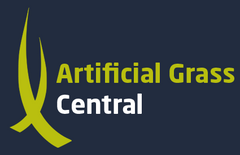A Step-by-Step Guide to Installing Artificial Grass on Concrete
Transforming your concrete space into a forever green space with artificial grass is a fantastic way to add beauty and functionality to your environment. In this guide, we will walk you through the process of installing artificial grass on concrete, outlining the tools and steps needed for a successful project.
What You'll Need:
- Grass Choice - Choose the right type and size of artificial grass for your project.
- Edging - Opt for composite or timber edging, with composite being ideal for curved areas.
- Screws (or Nails) - Secure the grass to the edging using screws or nails.
- Drill/Hammer - Use a drill or hammer based on your choice of screws or nails.
- Power Brush (or Stiff Brush) - Brush up the grass fibres to give your artificial garden a lifelike appearance.
- Stanley Knife - Cut the artificial grass to fit the desired area seamlessly.
May Need:
- Glue - Necessary for joining multiple pieces of grass.
- Tape - Spread glue on the tape for seamless joints; it's not an adhesive.
- Caulk Gun - Use if applying glue from a tube.
- Trowel - Evenly spread glue on the tape.
- Weed-proof Membrane - Prevent weeds from growing through the grass.
- Wheelbarrow - Transport and distribute aggregates efficiently.
Installation Overview:
- Planning:
- Assess the condition of the concrete area, ensuring it is flat and level.
- Measure:
- Measure the area and plan grass cuts based on roll width.
- Assess Drainage:
- Check the drainage and make adjustments if necessary by drilling holes.
- Repairs (If Necessary):
- Touch up or repair any crumbling sections of the concrete.
- Edging (If Necessary):
- Install edging to hide exposed edges and prevent tripping.
- Grass Fit:
- Roll out, cut, and fit the artificial grass, considering gluing or screwing it down.
- Power Brush:
- Brush the area to make the grass fibres stand up for a natural look.
Installation Process:
Step One: Planning
Before diving into the installation, take the time to thoroughly inspect the concrete area. Ensure that the surface is in good condition, free from any major cracks or irregularities. It's crucial for the concrete to be flat and level, providing a solid foundation for the artificial grass. If there are any existing issues, address them at this stage to avoid complications later.
Step Two: Measure
Accurate measurements are key to a successful installation. Measure the entire area where you plan to install artificial grass, taking into account any curves or corners. Artificial grass typically comes in rolls of various widths, often 4m or 2m wide. Plan your cuts accordingly to minimize waste and achieve a seamless fit.
Step Three: Assess Drainage
Proper drainage is essential to prevent water pooling on the artificial grass surface. Assess how the area currently drains, and if necessary, drill holes through the concrete to facilitate drainage. This step ensures that the artificial grass will have a drainage system similar to the existing concrete, preventing water-related issues in the future.
Step Four: Repairs (If Necessary)
Examine the entire area for any damages or imperfections on the concrete surface. Address crumbling sections by applying fresh concrete. Low spots may need filling with cement or infilling with grit sand to create a level surface. A thorough repair job ensures a stable and even foundation for the artificial grass.
Step Five: Edging (If Necessary)
Once the artificial grass is in place, inspect for any exposed edges, particularly around doorways or gates. Install edging along these areas to conceal the backing of the grass and prevent tripping hazards. Edging options include metal or rubber, providing a neat finish and enhancing the longevity of your artificial grass installation.
Step Six: Grass Fit
Roll out the artificial grass over the prepared concrete surface. Depending on your preference, you can either glue the grass directly onto the concrete perimeter or opt for a more flexible solution by drilling, plugging and securing the grass with screws. The latter option allows for easier removal in the future, providing flexibility in case you want to change or upgrade your artificial grass.
When fitting multiple pieces of artificial grass, carefully cut and join them as needed. If gluing is necessary, use the appropriate adhesive and tape combination to create seamless joints. Take your time to ensure precision during this step, as it contributes to the overall aesthetic appeal of the finished installation.
Step Seven: Power Brush
To give your artificial grass a natural and vibrant appearance, use a power brush or stiff brush to lift and stand up the grass fibres. This step not only enhances the visual appeal but also contributes to the longevity of the artificial grass by preventing matting and ensuring an even surface.
By following these detailed steps in the installation process, you can create a stunning and durable artificial grass surface on your concrete area. Whether it's a small backyard or a larger outdoor space, the result will be a low-maintenance, aesthetically pleasing environment that you can enjoy year-round.
Artificial Grass on Concrete Installation FAQ's:
Can I remove the artificial grass in the future if I use glue?
- While gluing provides a secure fit, it makes removal difficult. Consider screwing the grass down for future flexibility.
How do I handle exposed edges?
- Install metal or rubber edging to conceal exposed grass edges and prevent tripping.
These steps and using the right tools, you can transform your concrete space into a vibrant and low-maintenance artificial grass haven. Enjoy the benefits of a lush green environment without the hassle of traditional lawn care. And if you have a normal garden you want to convert to artificial check out our post on installing artificial grass.

